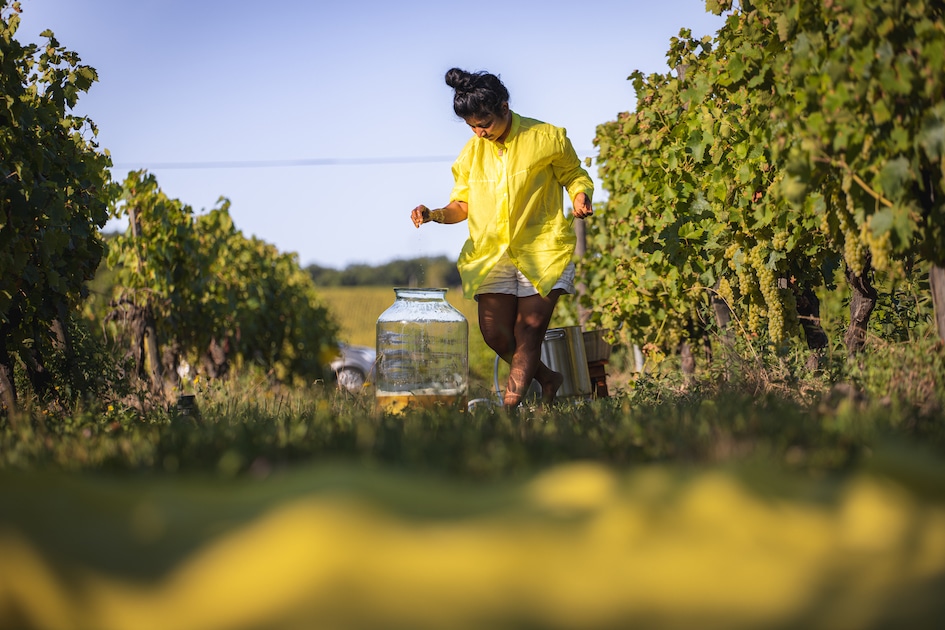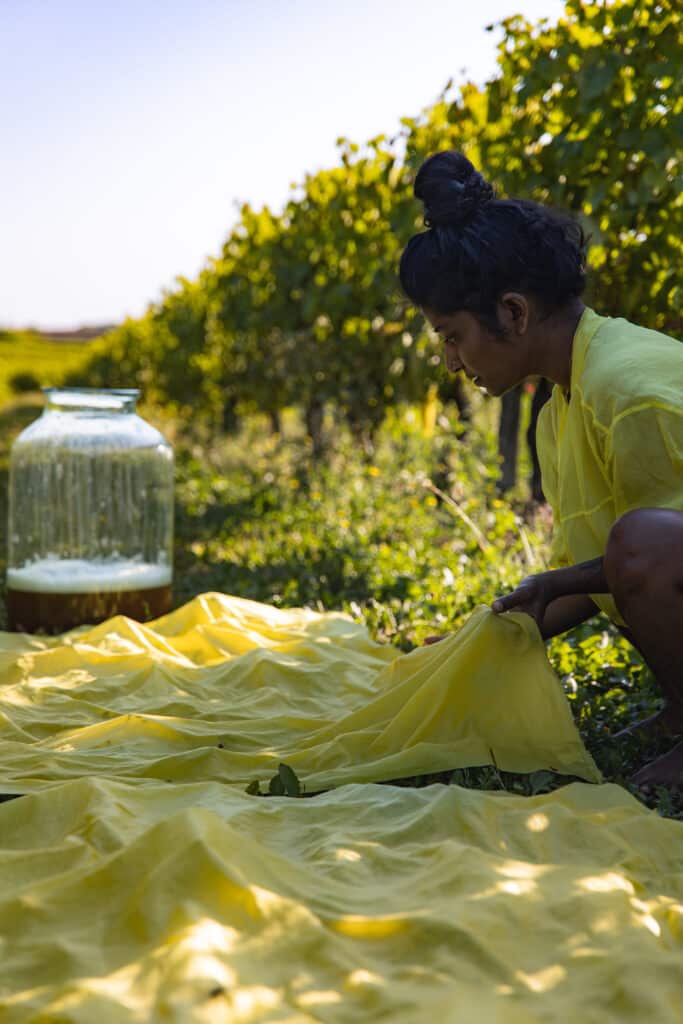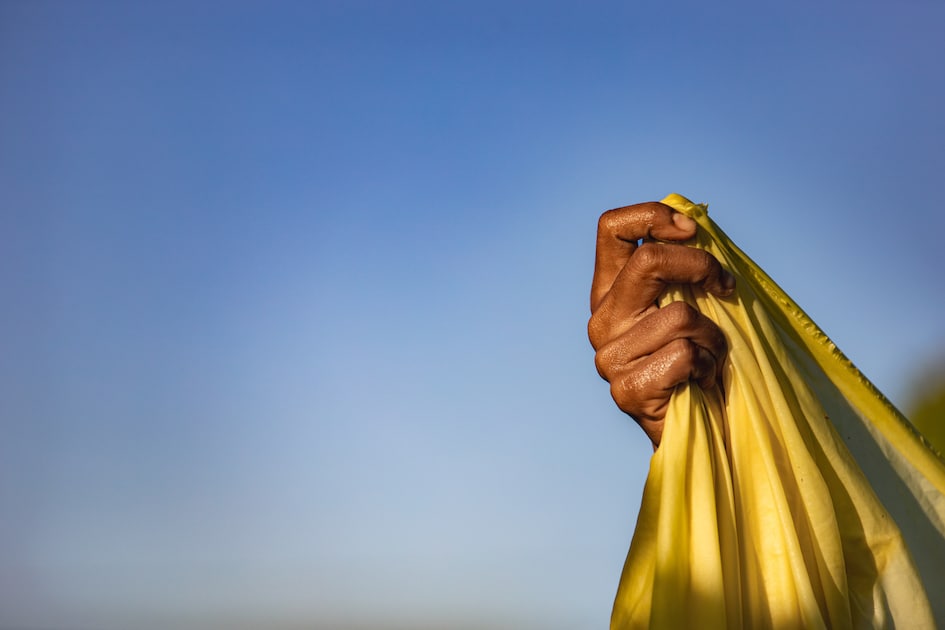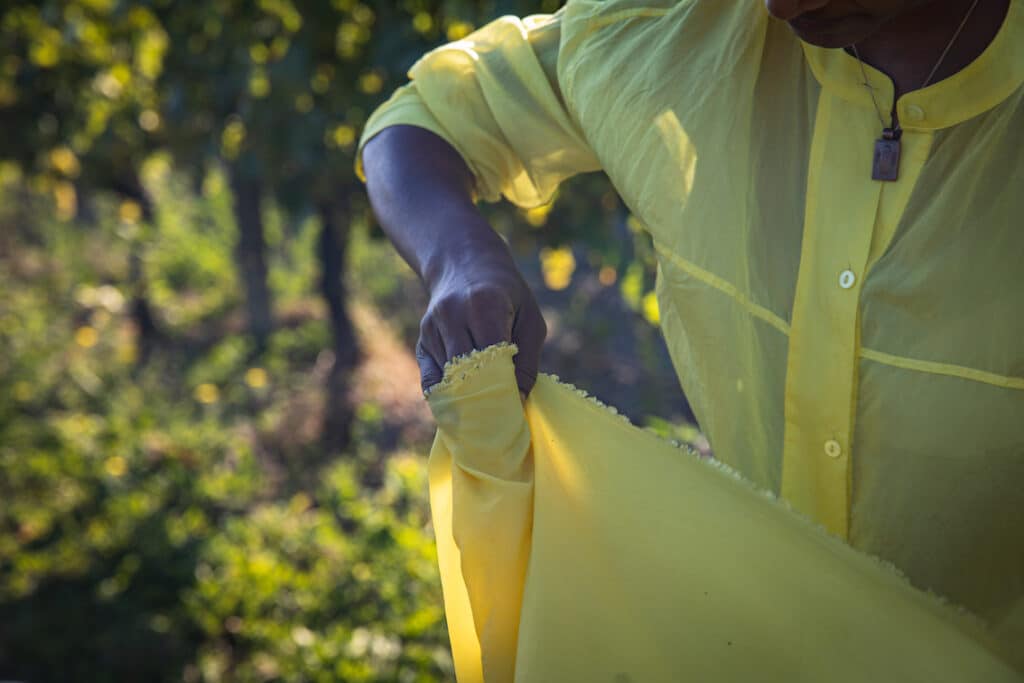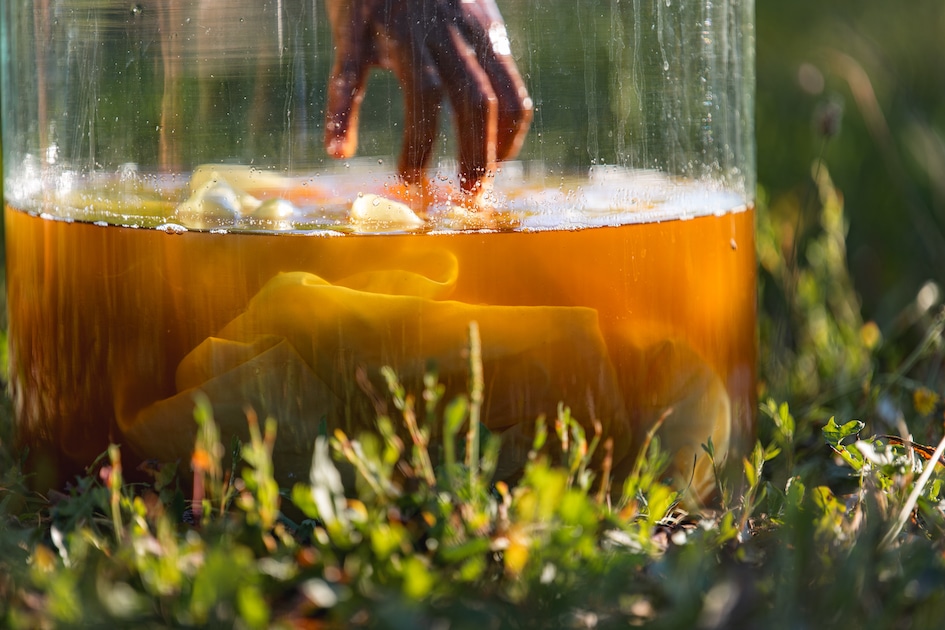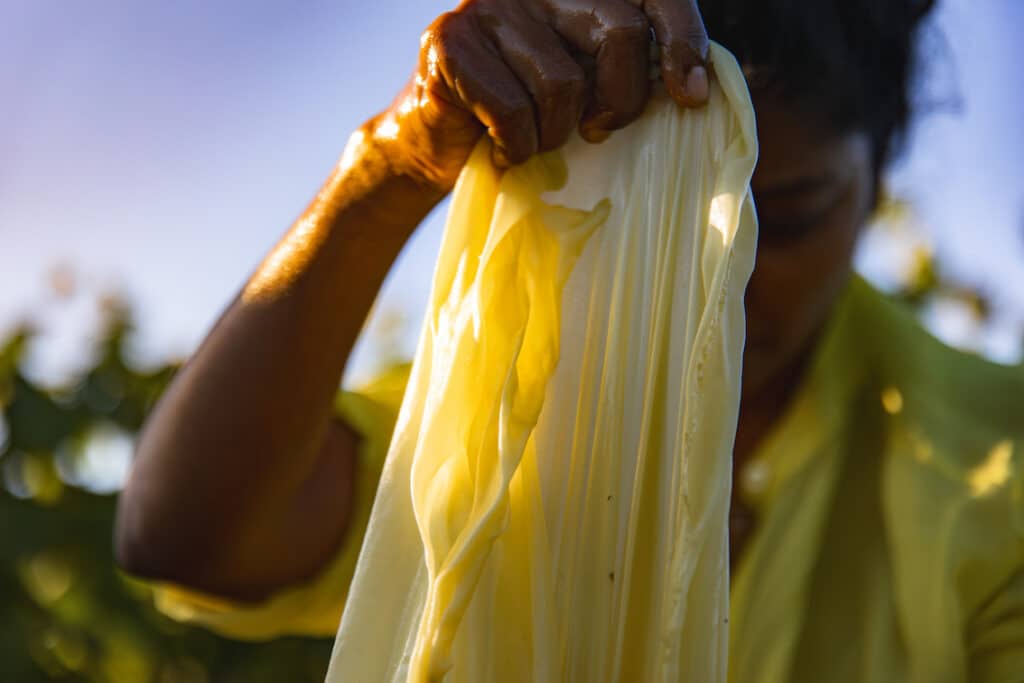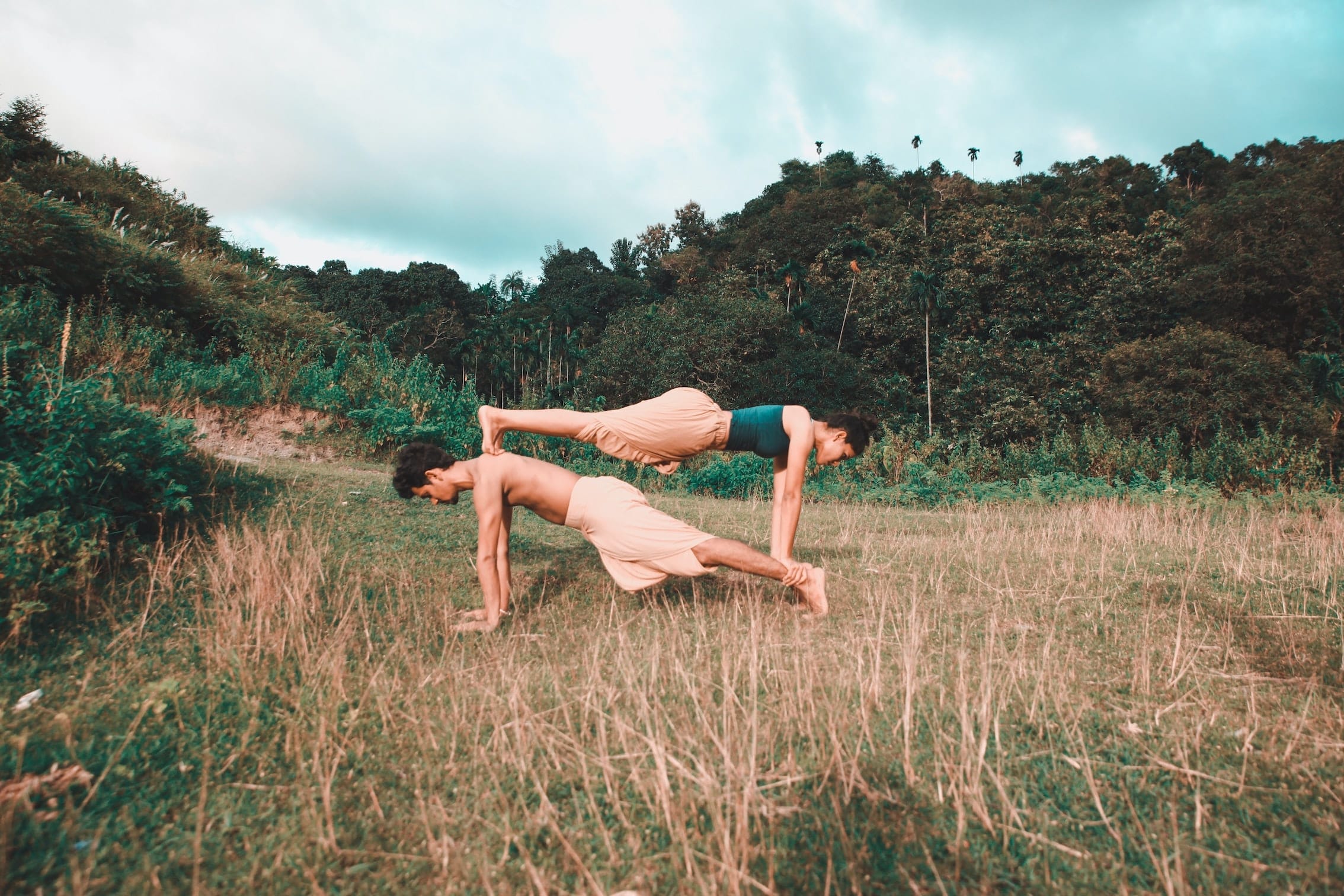Parmeet is a freelance artist and biodesigner with an extraordinary knowledge and understanding of nature. Originally from the Punjab in northern India, she worked in the world of glamour and luxury before dedicating herself fully to viticulture and sustainability. In Cognac, where she lives with her French husband, she innovates in her experimental “Petites Séries” studio, creating natural dyes and other innovations linked to the Living World.
A few words to introduce yourself, Parmeet?
I come from the perfume and luxury goods industry. I had a revelation that prompted me to abandon this sector and immerse myself in winegrowing in Cognac, guided by my respect for nature instilled from my childhood in the Punjab. I studied at the University of Poitiers, specializing in law, management and the spirits trade, while discovering the importance of healthy organic soils.
I reject conventional paths and now focus on sustainability in the spirits industry, reusing materials such as grape leaves and wood waste in my project “From Plants – Sari’s Offering to the Noble Earth and Noble Grapes.”
“My work aims to fuse fashion and environmental awareness, challenging industrial and agricultural practices impacting the planet.”
I collaborate with artists, communities and artisans to promote sustainable living and harmony with nature, inspiring positive change towards a more eco-friendly future.
For me, nature is more than just a backdrop; it’s a muse, a mentor and a constant companion. In my studio, I integrate organic materials and promote an ecosystem of creativity and sustainability, using natural dyes to capture the beauty of the natural world. In addition to my artistic projects, I’m also a mother, researcher and beekeeper.
Parmeet: Tell us about your project “From Plants – Sari’s offering to the noble soil and noble grapes”
For this project, I’m collaborating with organic winemakers, taking advantage of pesticide-free vine leaves to create 100% natural dyes. This process highlights the ability of agricultural by-products to generate durable, aesthetically pleasing textiles, while reflecting a commitment to ecology and sustainability.
“I celebrate nature’s bounty through events and performances, reminding us of the abundance and beauty the earth has to offer! “
I like to fuse creativity, sustainability and respect for nature. I use my art to explore and honor the wonders of the natural world, while promoting practices that benefit both humanity and the environment.
What are the special features of this textile? Would you recommend it to the fashion industry?
“From Plans – Sari’s Offering” focuses on the reuse of vine leaves, a by-product of viticulture, for textile dyeing.
This project not only pays tribute to Cognac’s organic winegrowers, but also proposes a model that can be applied to other winegrowing regions such as Bordeaux. It aims to reduce waste, promote the circular economy, and meet the growing demand for sustainable fashion products.
In fact, it has several benefits for the fashion industry, including working with winemakers to source grape leaves, creating exclusive collections, showcasing artisanal techniques, and educating consumers about sustainable practices. In doing so, it not only supports the environment and the local economy, but also paves the way for innovation and the integration of sustainability principles into luxury and fashion, leveraging the unique properties of vine waste for innovative, eco-friendly textiles.
But there are also drawbacks, as nothing is permanent… Natural dyes cannot be used in large volumes in the fashion industry. Availability is seasonal and colors vary. These constraints can affect large-scale production and the regularity of supply, which may not meet the needs of wholesale operations.
There are also unique advantages and opportunities offered by natural dyes, such as their ability to celebrate the diversity and authenticity of natural products, attracting consumers who value sustainability and craftsmanship. Despite the limitations, there are niche markets and luxury brands that can leverage the uniqueness of natural dyes to differentiate themselves.
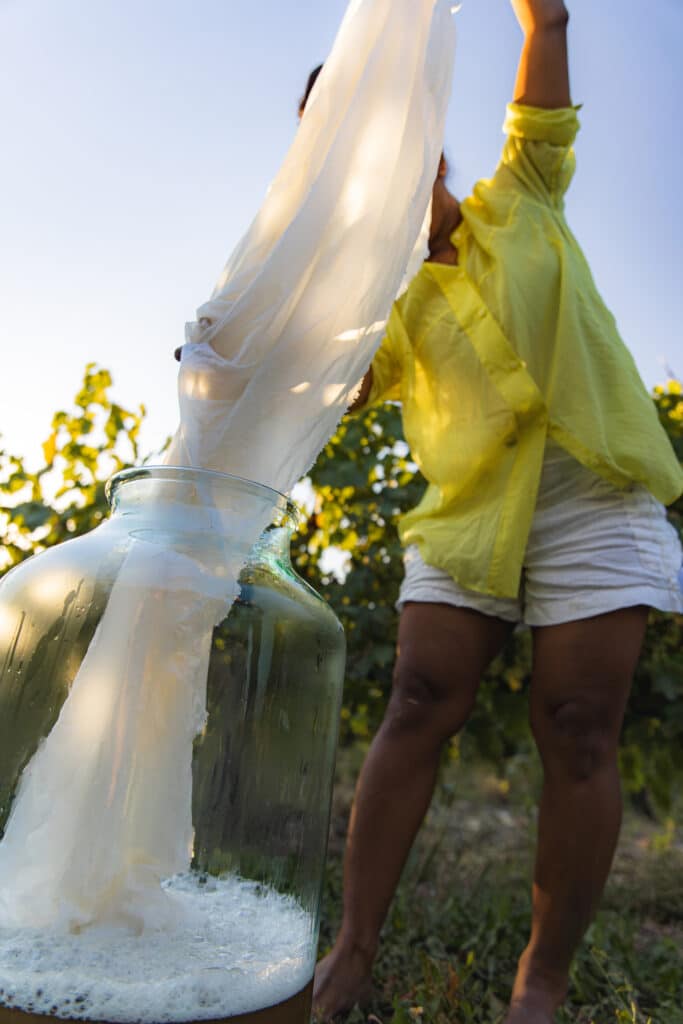

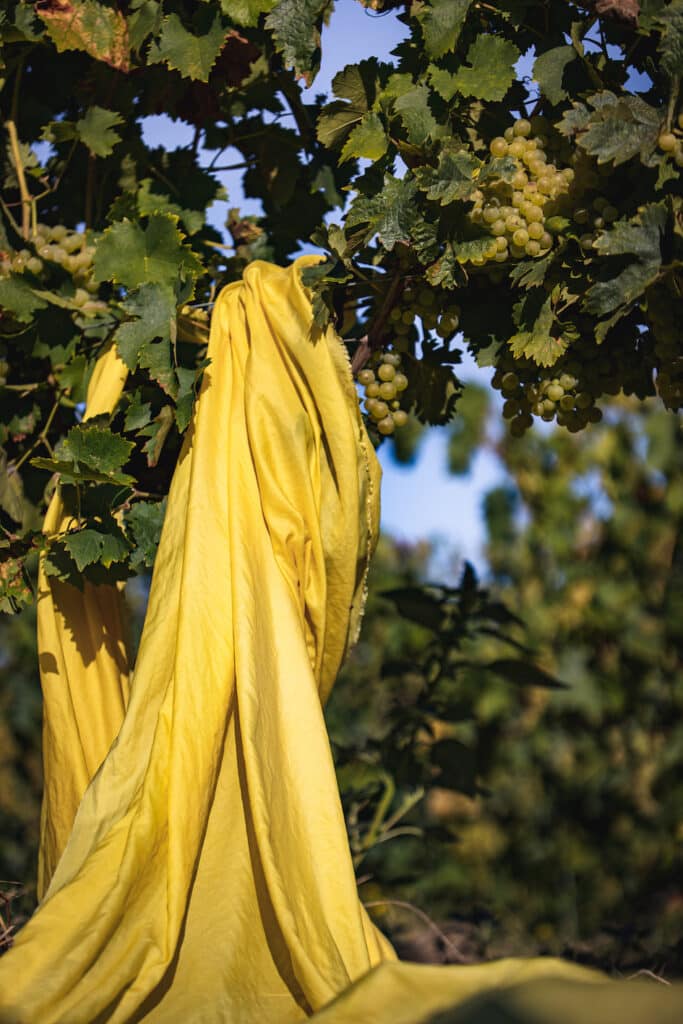
Your many projects all have a sacred link with nature. What are they?
In my various roles as artist, beekeeper, researcher, cultural historian and collaborator, my mission is simple: to protect nature, preserve ancestral crafts and promote sustainability.
Through my artistic endeavors, I explore the potential of natural materials such as plants, agricultural residues and insect-derived substances to create meaningful works. In short, I want Nature and ancestral ways of life to be my co-partners!
Drawing inspiration from local bioregional economies, my line of experimental design is creating a growing market for natural materials. However, while using agricultural leftovers for sustainable materials offers a solution to waste, it doesn’t address the wider issues of the environmental impact of industrial agriculture.
My project, “The Weave“, is a call to protect the ancient art of weaving, enabling artisans to thrive in a modern world while honoring cultural heritage. Through collaboration, I aim to weave a future where tradition meets innovation, sustainability prevails and each thread tells a story of resilience. A recent trip to India highlighted the importance of preserving traditional crafts such as hand-weaving.
Modernization threatens these age-old practices, with synthetic fibers replacing organic materials. Protecting the cultivation of organic cotton and silk, natural dyeing and fabric printing is essential to sustaining ecosystems and empowering rural communities, especially women.
Extending my efforts on a global scale, I collaborate with local weavers’ associations in France to revive traditional weaving practices through the Weave project. By advocating sustainable alternatives rooted in tradition and community, I’m working to create a more interconnected and environmentally conscious future.
A notable success within the Weave project is our collaboration on“Weaving Braille” with artist Stevie Ronnie. This interdisciplinary venture combines Tangaliya weaving, a 700-year-old traditional Indian art form, with traditional Indian indigo dyeing and the Braille language. Together, we aim to create unique tactile artworks exploring themes of sustainability, tradition, commerce and love.
My second project concerns mushrooms. The current environmental crisis has become all-encompassing, affecting all ecological domains and threatening biodiversity, soil, water and air.
In response to this total crisis, an ever-growing quest for sustainable alternatives to petroleum-based materials has emerged. In the field of design – products, interiors and fashion – this has meant an increase in natural and bio-fabricated options developed at industrial level, as well as an increase in experimental design at studio level.
Motivated by the need to preserve land for food production, many companies, materials engineers and designers have begun to explore the use of industrial agricultural by-products for the production of sustainable materials.
I’m co-partnering with Fungi, Mycelium, the intricate network of fungal threads found in the soil, could be the key to achieving this goal. It acts as a natural symbiotic partner for plants, improving soil structure and facilitating nutrient absorption.
By integrating mycelium into my artistic practice, I aim to create sustainable artworks that celebrate the Earth’s biodiversity while actively contributing to its preservation. One of my projects involves making “Coccony ” cocoon sculptures from Indian Eri silk, Cognac sawdust and mycelium from around the Cognac forest.
This is a structure developed by fungi. These sculptures are not intended to be worn by humans, but serve as nesting habitats for birds. I plan to place these sculptures in bird sanctuaries and school gardens, where they can provide natural and sustainable nesting spaces for birds.
What’s more, they serve as teaching tools for students to learn about biodiversity and environmental conservation. With this initiative, I’m not only creating art, but also promoting environmental awareness and stewardship.
Finally, I’d like to tell you about the Tabouret Bourdonnant project: In the bustling city, amidst the concrete jungle, resides a whisper of nature’s call – the buzzing of bees. Inspired by their tireless efforts and the urgency of protecting their habitats, as a dedicated beekeeper I set out on a journey of innovation and compassion. Guided by the wisdom of scientist Paul Stamets and fueled by a deep connection to the natural world, I set out to create something cozy – the Buzzing Stool.
I made mycelium stools exclusively for bees, using sustainable materials and inspired design. These stools provide a sanctuary for bees in the privacy of their hives, offering comfort and safety in their natural environment.
Photos: Prameetkaur Tesson

